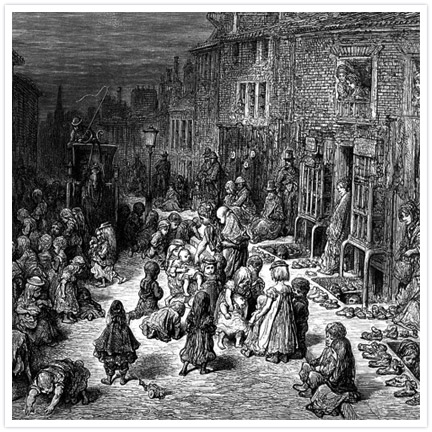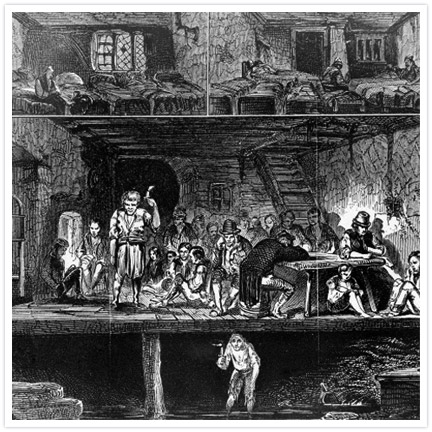A Perfect Breeding Ground
Tuberculosis bacteria thrive and multiply under certain conditions. They prefer dark areas with available oxygen and can survive on the surface of objects or floating in the air for several hours. Direct sunlight will kill the bacteria, though, and breezes will disperse them, decreasing the likelihood that any one person will inhale enough bacteria to become infected.
Living situations where many individuals live close together increase the likelihood of disease transmission. The bacteria are transmitted from person to person most easily in crowded conditions. In many cases in the past whole families were infected with the disease. Areas of high population density, such as cities, are also at higher risk.
Malnutrition and alcoholism can also facilitate the transmission of the disease by weakening an individual’s immune response. If one person is unable to contain the tuberculosis bacteria and they develop an active case, they can spread the bacteria by coughing and sneezing.
 |
 |
|
|
Crowded urban areas provided a ripe breeding ground for tuberculosis Dudley St., Seven Dials. Gustave Dore (1872) © Wellcome Library, London |
Lodging House in Field Lane. Hector Gavin (1848). © Wellcome Library, London |
Urban cities during the Industrial Revolution provided ripe breeding grounds for tuberculosis. The populations of Britain, Europe, and North America flooded to cities in search of work, increasingly found in poorly ventilated and crowded factories, and living quarters became ever more crowded. As more and more people competed for jobs, their wages decreased. It became very difficult for a large section of the population to feed and house itself. It was in the face of such societal conditions that the incidence of tuberculosis increased during the late eighteenth and early nineteenth centuries.
 |
|
Crowded condition in factories helped spread disease General View Sewing Room - Large Shoe Factory, Syracuse NY, New York Public Library Digital Gallery, g91f154_021f |
In Vienna in 1860 the death rate from tuberculosis was 800/100 000, while in Prague it was 900/100 000. Although the mortality rate remained high through the early twentieth century, causing societal concern, after the discovery of the bacterial cause of the disease mortality rates began to decrease in the Western world.

